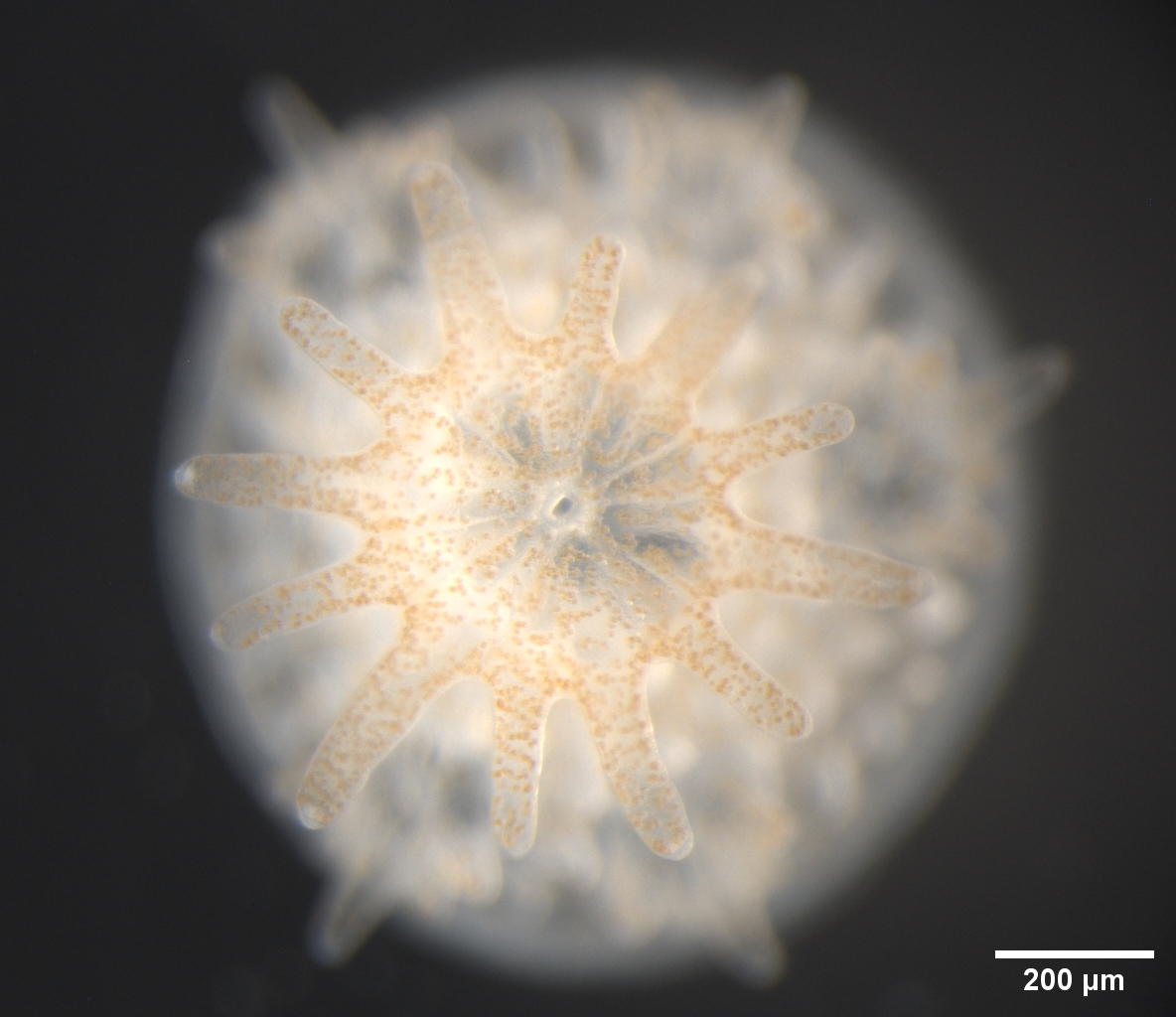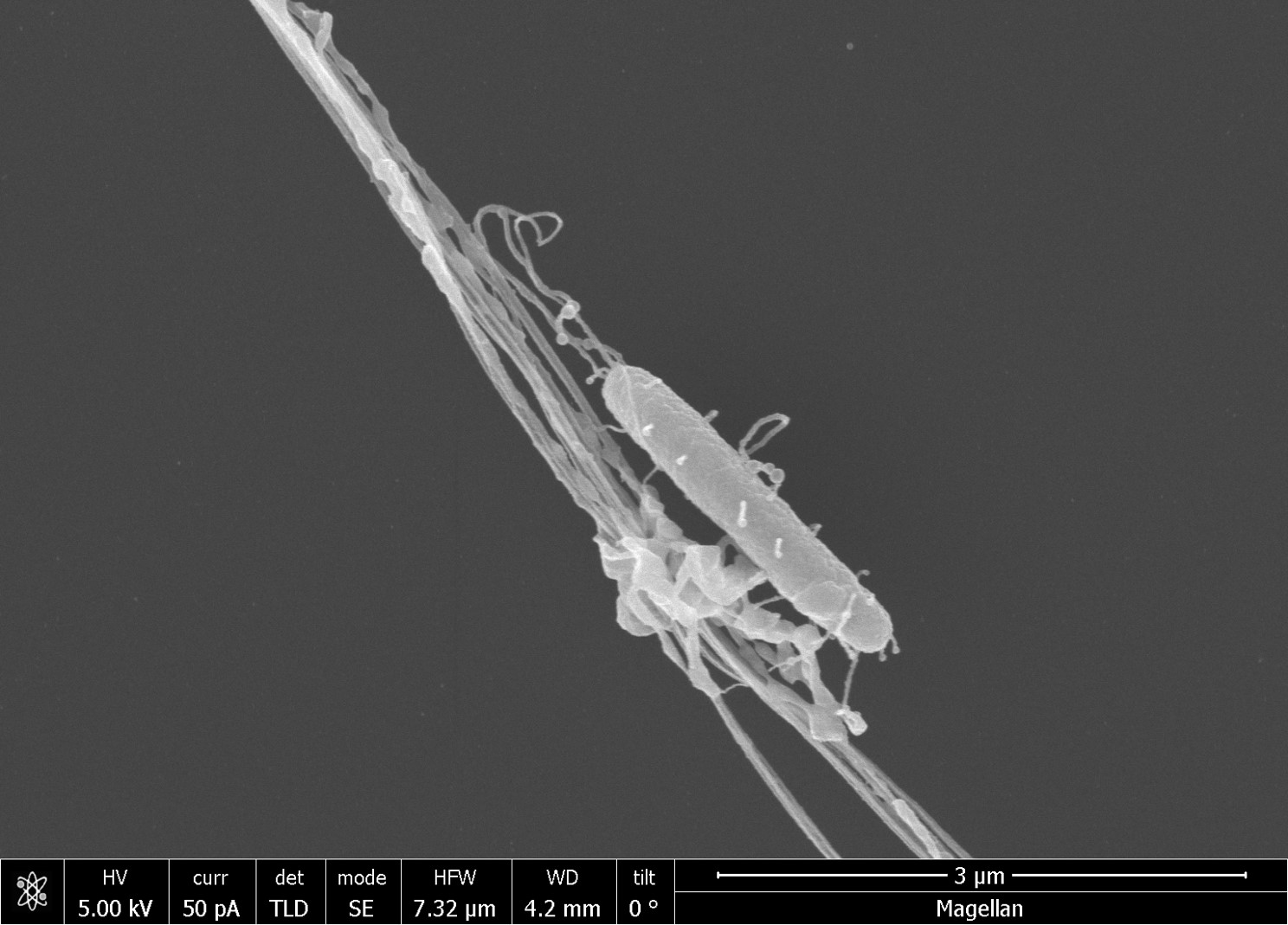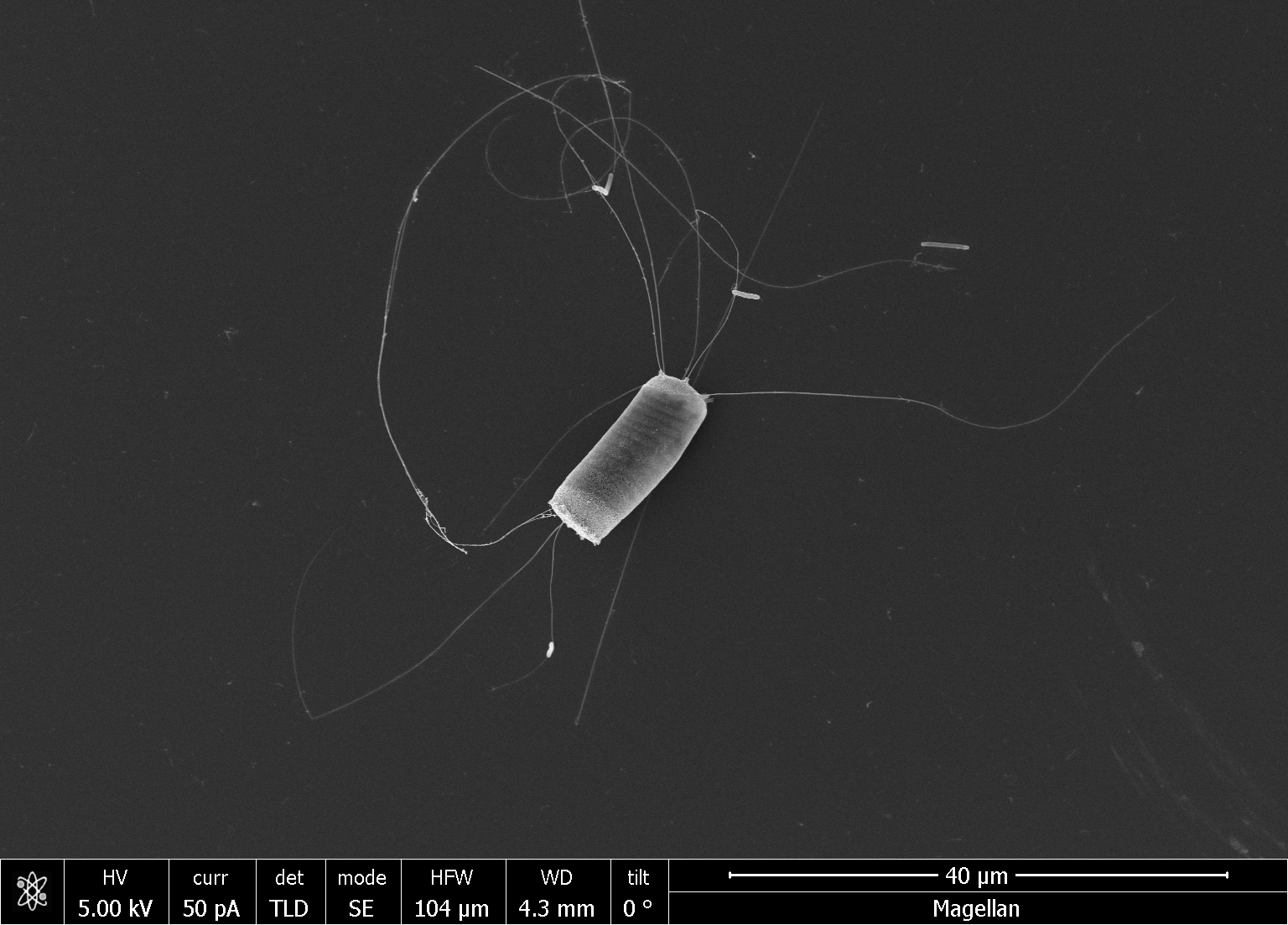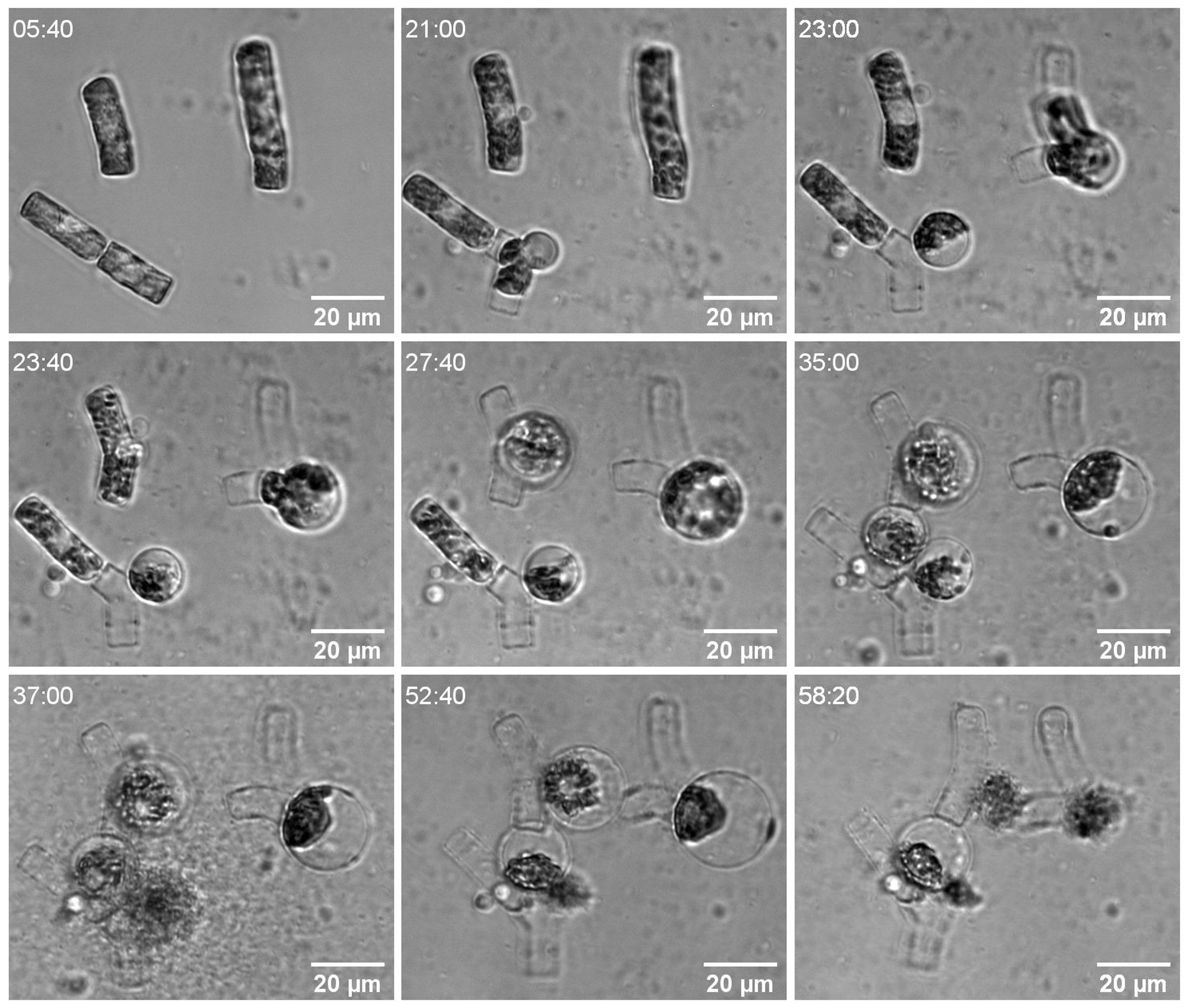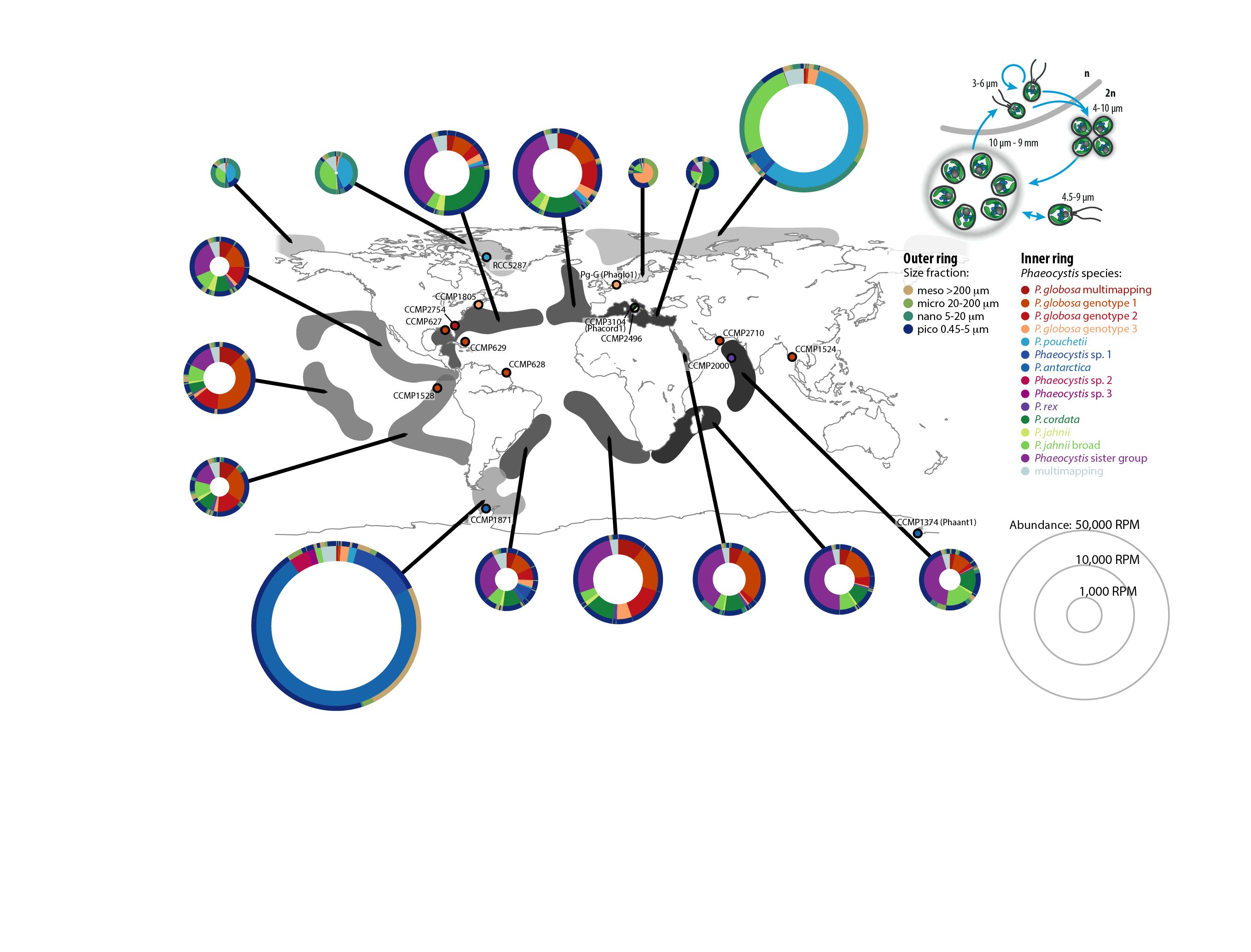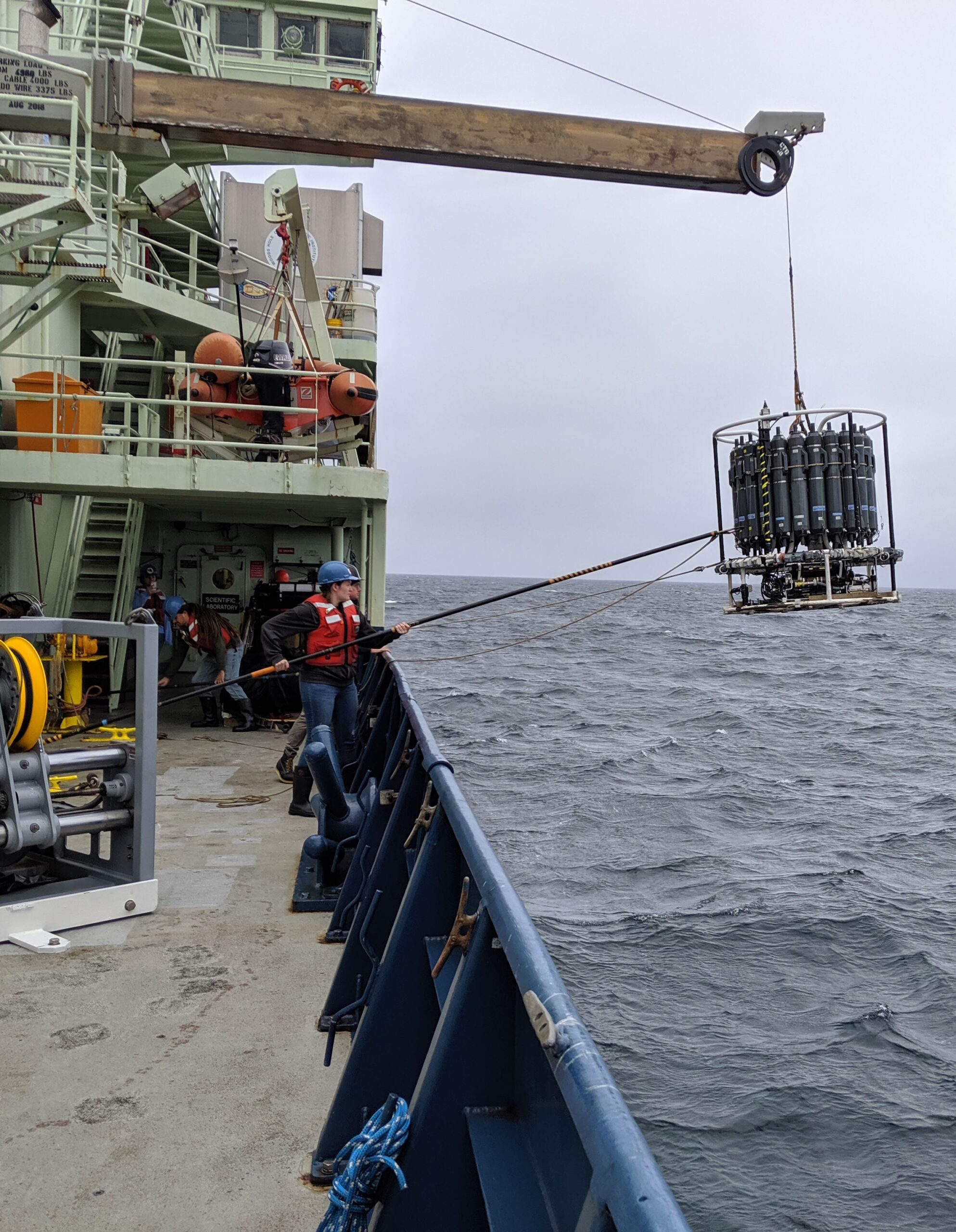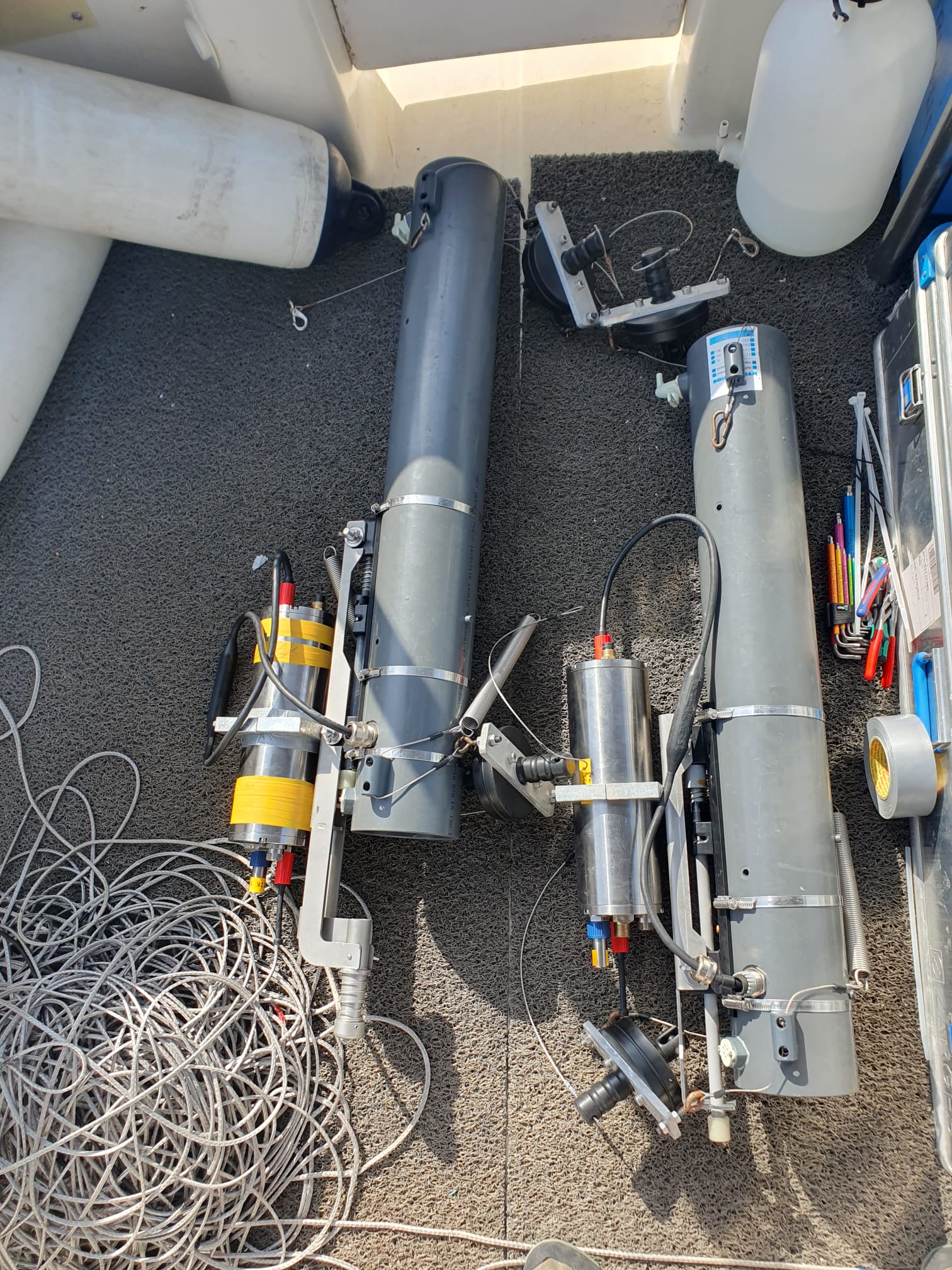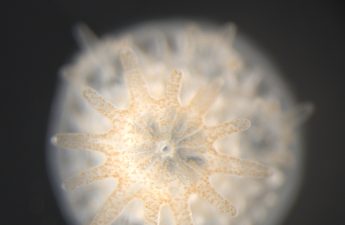
Settled juvenile coral – Isobel Short
Light microscopy image showing a settled juvenile coral of the species Acropora millepora, 19 days post spawning. Individual cells of the endosymbiotic algae Symbiodiniaceae are visible in the tissue.
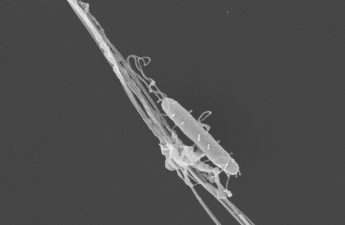
Microscale dynamics of bacteria-spines interactions – Mathieu Forget
Pili-mediated attachment of a bacterium to a diatom spine revealed by scanning electron microscopy.
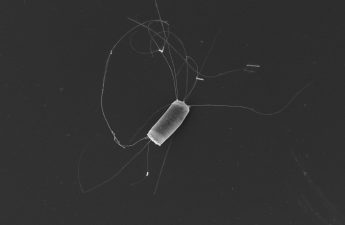
A scanning electron microscope (SEM) picture of bacteria attached to the spines of a diatom – Mathieu Forget
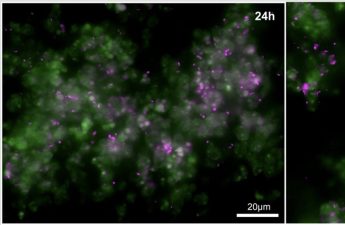
Microcolony development on T. pseudonana particles – Shaelyn Silverman
Pseudoalteromonas 3D05 forms microcolonies on aggregates of the diatom T. pseudonana within 72h of batch culture incubation.
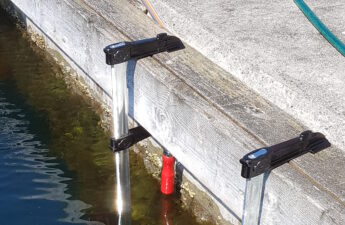
ISCA deployment – Estelle Clerc
ISCAs are deployed in small deployment boxes in surface water.
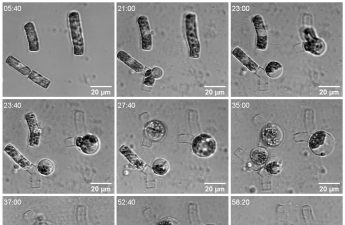
Bacteria-induced lysis of T. rotula – Isobel Short, Clara Martinez-Pérez, Uria Alcolombri
A diatom-associated widespread marine bacteria causing morphological changes and ultimately cell lysis of T. rotula (time resolved microscopy).
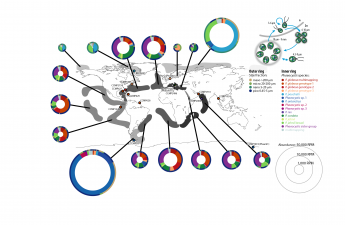
Genome-assisted biogeography of Phaeocystales – Zoltan Füssy
Genome-assisted biogeography of Phaeocystales, based on genome sequence data from cultured strains and metagenome-assembled genomes. The data are binned by taxonomic assignment to tentative lineages, as determined from a multi-gene phylogeny, and by sample size fraction. An overview of the life cycle of colony-forming Phaeocystis is provided in the upper right panel – abundance in large size fractions suggests the development of the colonial stage or symbiotic relationships, such as those known to form with Acanthareans.
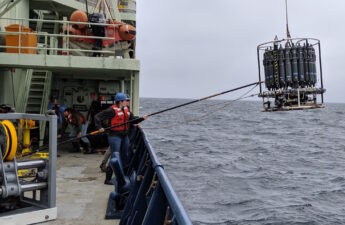
Water collection with a trace metal clean rosette – Rob Lampe
JCVI and Scripps scientists aboard R/V Atlantis in the Pacific Ocean off the coast of Big Sur, California, recovering the ship’s main trace metal clean rosette to gather measurements (e.g., temperature, salinity, nutrients) during the cruise.
Reference: Lampe et al_Nature Communications_2023
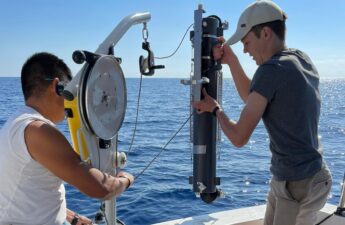
Deployment of DeepISCA – Estelle Clerc
The DeepISCA is attached to an independent deployment wire, before being lowered to the desired depth. Here in our deployments in Mallorca, in October 2023, we sampled chemotactic bacteria at 200 m in the ocean. The DeepISCA allows for depth-specific deployment of the ISCA below the surface, while avoiding turbulence and contamination of the wells by unwanted bacteria.
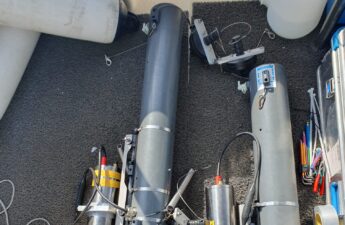
DeepISCA – Estelle Clerc
Two copies of DeepISCAs enable us to deploy 16 ISCAs at once and characterize the chemotactic response of marine bacteria to 18 different substances. In Mallorca in October 2023, we deployed a suite of chemicals ranging from labile to refractory carbon compounds, to characterize the response of marine communities along the depth axis.
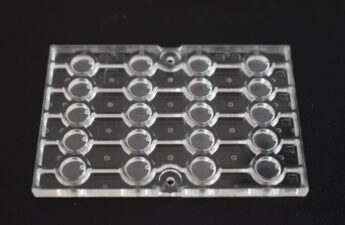
In situ chemotaxis assay (ISCA) – Estelle Clerc
The ISCA is credit card-sized with 20 wells distributed in a 5 x 4 well array, each linked to the external aquatic environment by a small port. Chemoattractants loaded into the wells diffuse in the environment via the port, and chemotactic microbes respond by swimming through the port into the well.
Source: Clerc et al_Journal of Visualized Experiments_2020


